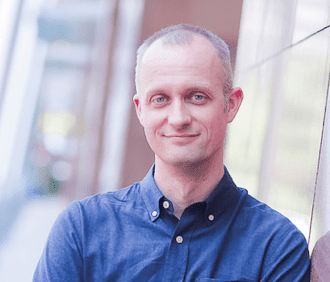We don’t often associate the DIY movement with medical care, but in the developing world it’s not uncommon for doctors and nurses to fashion their own instruments out of everyday items. Jose Gomez Marquez, co-director of the MIT Little Devices Lab, knows of Syrian doctors turning milk cartons into anesthesia equipment, and a guy in China who built his own dialysis machine. Many of these homemade devices end up working better than the “real” ones donated from the West, which ultimately break down and end up in the trash heap.
In fact, up to 90 percent of the medical equipment donated to developing countries fails within six months—it’s too expensive to maintain, and its inner mechanisms are too opaque. “It’s basically designed for black box,” said Marquez of your average medical device at a speech in 2013. “You cannot break it open, you cannot understand how it works. It remains a very expensive mystery.”
The mission of Marquez’s team at the Little Devices Lab is to pull back this curtain by designing simplified versions of standard medical equipment that health professionals can build on their own. This process often starts with a “device tear-down.” For instance, Marquez and his colleagues took apart a cauterizer pen to find out why it costs $25—and found that it’s made of $3 worth of material. “Until we start to understand as consumers and patients the almost artificial complexity of certain devices, we won’t have a very good argument to try to lower health care costs,” he said.
https://www.instagram.com/p/BhMzjxggPy6/
Lowering costs is key to fixing America’s broken health care system. But in the developing world, finding ways to get low-cost equipment into doctors’ hands is even more important. After visiting clinics in Nicaragua, Marquez and his MIT co-director Anna Young realized that the homemade instruments being used there “didn’t look good, but they worked.” They realized the solution was to give these doctors and nurses better tools and materials, to enhance their improvising. “It’s about figuring out how to systematize something that’s already happening,” Marquez said.
To this end, the Little Devices Lab created MEDIKit, a set of modular components that can be fashioned by medical professionals into devices for drug delivery, diagnostics, prosthetics, even surgery. The Lab also created Ampli, a plug-and-play set of diagnostic blocks that can be used to test bodily fluids. An older Little Devices project was the SolarClave, a device used to sterilize surgical instruments without being connected to a power supply. It can be made locally with nothing more than a bucket, a pressure cooker and 250 pocket mirrors.
https://www.instagram.com/p/Bslmfr-HuXl/
None of these devices look like much—and that’s exactly the point. They’re made up of basic, cheap, durable, easy to assemble, and most importantly, simple components that doctors and nurses can fashion into the devices they need at any given moment.
Simplicity is key to this model, because the Lab often uploads fabrication instructions so health care providers can build their own devices independently. This open-source approach makes it difficult to quantify impact, particularly since Marquez sees his target consumer as “that lonely doctor or nurse in the middle of nowhere, or in a crowded hospital in a developing-world city.” But anecdotal evidence suggests the model is being adopted. Health care providers in Nicaragua are using the Lab’s microfluidity blood testing kit, which can be assembled from modified Legos, to test for things like heart disease and diabetes. “When we get pictures of patients [in developing countries] using our devices, it’s the best feeling in the world,” Marquez told Sanjay Gupta on The Next List.
It’s even catching on in the U.S. “Hospital spaces are taking these up across the country,” said Marquez in a recent talk at the Kennedy Center in Washington, D.C. For instance, the University of Texas Medical Branch in Galveston has created what they call the MakerHealth Space, where staff can use equipment that’s as high-tech as laser cutters (and as low-tech as sewing machines) to create everything from new medication delivery systems to better knee braces. One nurse in the burn ward created a portable cooling shower out of PVC pipes and 3D-printed parts.
“We’re encouraging inventors,” Marquez said during his appearance on The Next List. “We believe invention can and will happen in the developing world, and can and will happen in our backyard in America.”









